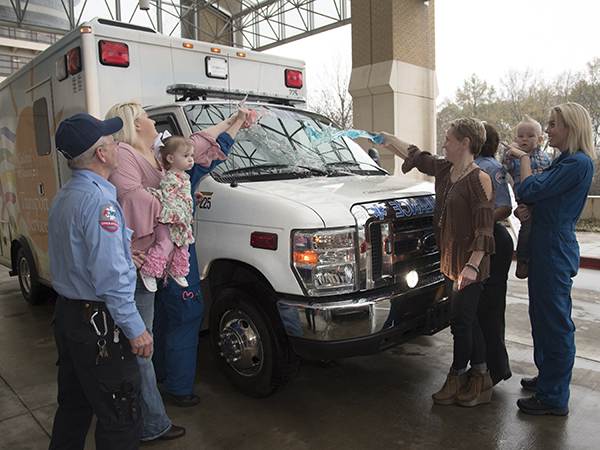Ambulances are equipped to run initial diagnostics for a heart attack. Paramedics can perform an electrocardiogram (ECG) en route to the hospital.
Experiencing a heart attack requires immediate medical attention. Ambulances serve as emergency response vehicles that cater to such critical cases. They come furnished with essential medical equipment and trained paramedics who can swiftly assess the condition of a patient. One of the key diagnostic tools on an ambulance is the electrocardiogram, commonly known as an ECG or EKG.
This portable machine monitors the heart’s activity and can help in detecting irregularities such as a heart attack. Quick assessment and early intervention can significantly enhance the chances of survival and reduce the damage to the heart. Ambulance service play a crucial role in bridging the gap between the onset of symptoms and definitive hospital care, providing a lifesaving link for patients suffering from heart attacks. Ambulance BD 24 provide specialized ICU ambulance support in Dhaka.

Credit: www.rwkgoodman.com
Initial Assessment And Monitoring
ECG and Heart Attack Identification
Experiencing chest pain or discomfort often triggers the suspicion of a heart attack, which is a life-threatening emergency. Quick identification and response are crucial. Ambulances are equipped with essential medical tools, one of which is the Electrocardiogram (ECG). This device plays a pivotal role in the diagnosis of heart attacks. Understanding how ECGs work and what they reveal about the heart’s activity is vital for early detection and treatment of heart-related events.
Role Of Ecg In Diagnosing Heart Attacks
An ECG is a non-invasive test that records the heart’s electrical activity. Paramedics can administer this test in a matter of minutes during an emergency. The quickly obtained results can be crucial in determining the course of action and can lead to faster intervention upon arrival at the hospital.
- It helps detect irregularities in the heart’s rhythm and structure.
- It identifies blockages or impairments in the heart’s blood supply.
- It provides vital data on the location and extent of a heart attack.
The ECG is also invaluable for guiding treatment decisions, such as the need for medication, angioplasty, or coronary artery bypass grafting (CABG).
Identifying Specific Ecg Patterns For Heart Attacks
Specific changes in an ECG can indicate a heart attack. These changes are distinct patterns that signal different types of cardiac events.
| ECG Pattern | Indication |
|---|---|
| ST-Elevation | Indicates a complete blockage of one of the heart’s arteries and suggests an ST-Elevation Myocardial Infarction (STEMI), which requires immediate treatment. |
| ST-Depression | Could suggest ischemia or a partially-blocked artery, possibly pointing toward a Non-STEMI event. |
| T Wave Inversion | This pattern may also suggest ischemia or that a heart attack is evolving. |
| Pathological Q Waves | Can indicate a previous heart attack and the presence of scar tissue on the heart. |
By analyzing these patterns, EMTs and paramedics can quickly ascertain the type of myocardial infarction and administer the most appropriate pre-hospital care.
Troponin Testing In Ambulances
Troponin testing in ambulances is a significant development in the realm of emergency medicine. Troponin levels are biomarkers used in the diagnosis of heart attacks or acute myocardial infarction (AMI). By equipping ambulances with the technology to conduct these tests, healthcare professionals can initiate a more immediate response to cardiac events, potentially saving lives by cutting down critical treatment time. Let’s delve into the importance of this testing and unpack the significance of quick results.
Importance Of Troponin Testing
The presence of troponin in the bloodstream signifies heart muscle damage, commonly associated with heart attacks. The heart releases these proteins into the blood following an injury to the heart muscle. Recognizing elevated troponin levels allows healthcare providers to:
- Confirm or rule out a suspected heart attack.
- Assess the severity of the heart damage.
- Make informed decisions about the necessity for further intervention or treatment.
Implementing troponin testing in ambulances equips medical teams with a powerful diagnostic tool right where patient care begins – pre-hospital.
Quick Results And Their Significance
The ability to test for troponin levels rapidly while still en route to the hospital is a game-changer. Rapid results allow medical teams to:
- Prepare emergency department staff for immediate treatment upon the patient’s arrival.
- Divert to hospitals with specialized cardiac care units if necessary.
When it comes to a heart attack, time is muscle. The quicker an AMI is detected, the faster treatment can begin, which is crucial in minimizing heart damage. Quick results from troponin tests can significantly influence patient outcomes.
Paramedic’s Expertise And Intervention
A heart attack is a critical medical emergency where every second counts. The expertise and intervention of paramedics can be life-saving during such an event. These highly trained emergency service professionals possess the necessary skills to identify and respond to heart attack symptoms promptly. Their timely actions not only stabilize the patient but also prepare them for the necessary medical treatment required upon arrival at a hospital.
Training And Skills Required To Recognize Heart Attack Symptoms
Paramedics undergo rigorous training to identify the signs of a heart attack, which may include chest pain, shortness of breath, and discomfort in other areas of the upper body. They use a combination of medical knowledge and practical skills acquired through their education and field experience to make swift decisions.
- Extensive knowledge of cardiovascular systems
- Proficiency in interpreting electrocardiograms (ECGs)
- Assessment of patient history and risk factors
- Physical examinations and vital signs monitoring
Immediate Actions Taken By Paramedics
Once a heart attack is suspected, paramedics spring into action with immediate measures designed to manage the situation and minimize heart damage.
- Administering oxygen therapy: to ensure the body receives adequate oxygenation
- Chewing aspirin: to reduce blood clotting and improve blood flow to the heart
- Utilizing cardiac monitoring: to continuously evaluate the heart’s electrical activity
- Initiating IV access: to allow for immediate medication delivery as needed
- Preparing for advanced life support: including defibrillation and advanced airway management
| Action | Purpose | Outcome |
|---|---|---|
| Oxygen Therapy | Enhance oxygenation | Stabilize patient’s condition |
| Aspirin Administration | Prevent blood clots | Improve coronary blood flow |
| Cardiac Monitoring | Assess heart activity | Guide treatment decisions |
| IV Access | Facilitate drug administration | Quick medicinal intervention |
| Life Support Preparation | Ready for cardiac arrest | Potentially save a life |
Equipment And Technology On Ambulances
Frequently Asked Questions On Can Ambulance Check For Heart Attack
Can Ambulances Detect Heart Attacks?
Ambulances are equipped with ECG (electrocardiogram) machines that can help paramedics detect heart attacks. They can swiftly identify cardiac issues and provide essential pre-hospital care.
What Signs Do Paramedics Check For Heart Attacks?
Paramedics check for chest pain, shortness of breath, sweating, nausea, and irregular heartbeats. They assess symptoms and may use an ECG for accurate diagnosis.
How Quickly Can An Ambulance Respond To Heart Attack?
Response times vary by location, but ambulances aim to reach life-threatening situations within 8-15 minutes. Immediate care is crucial for heart attack cases.
What Treatments Can Be Administered In An Ambulance?
Paramedics can provide oxygen therapy, aspirin, and nitroglycerin. They might also start an IV line and prepare for advanced treatment upon hospital arrival.
Conclusion
Understanding the capabilities of ambulances in heart attack scenarios is crucial. They are equipped to diagnose and start treatment swiftly, potentially saving lives. If you need help identifying ambulance services in Dhaka or want to learn what you should know before calling, explore our guide. Contact us now for emergency response.

